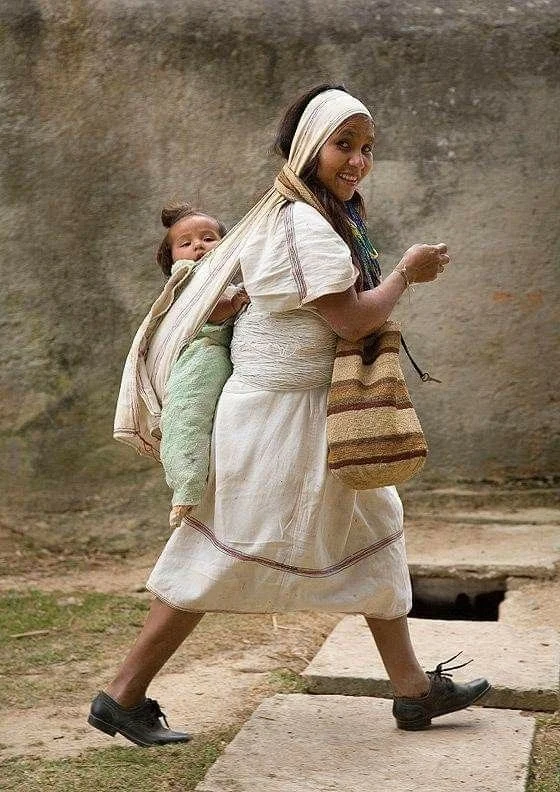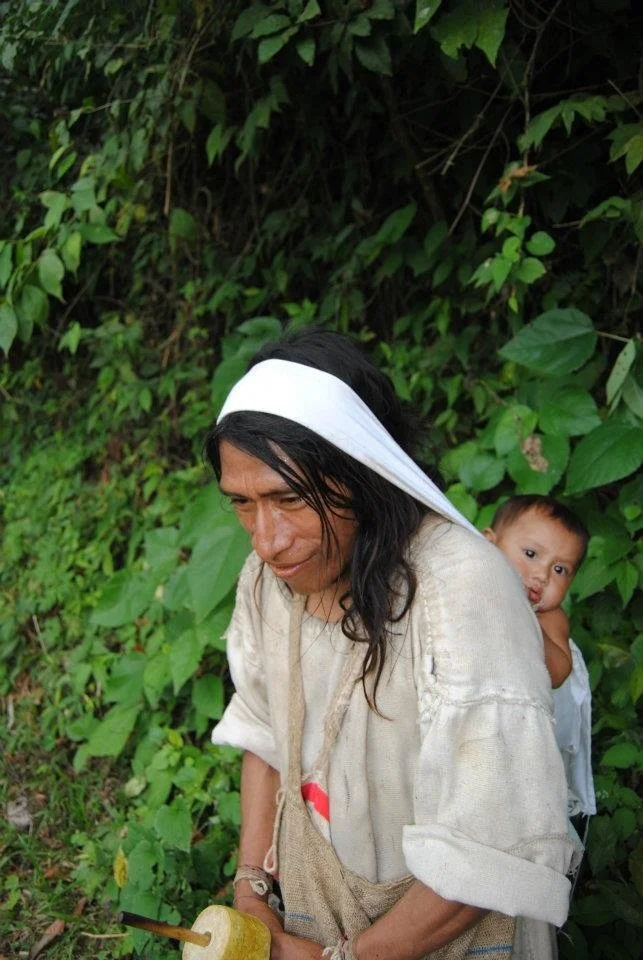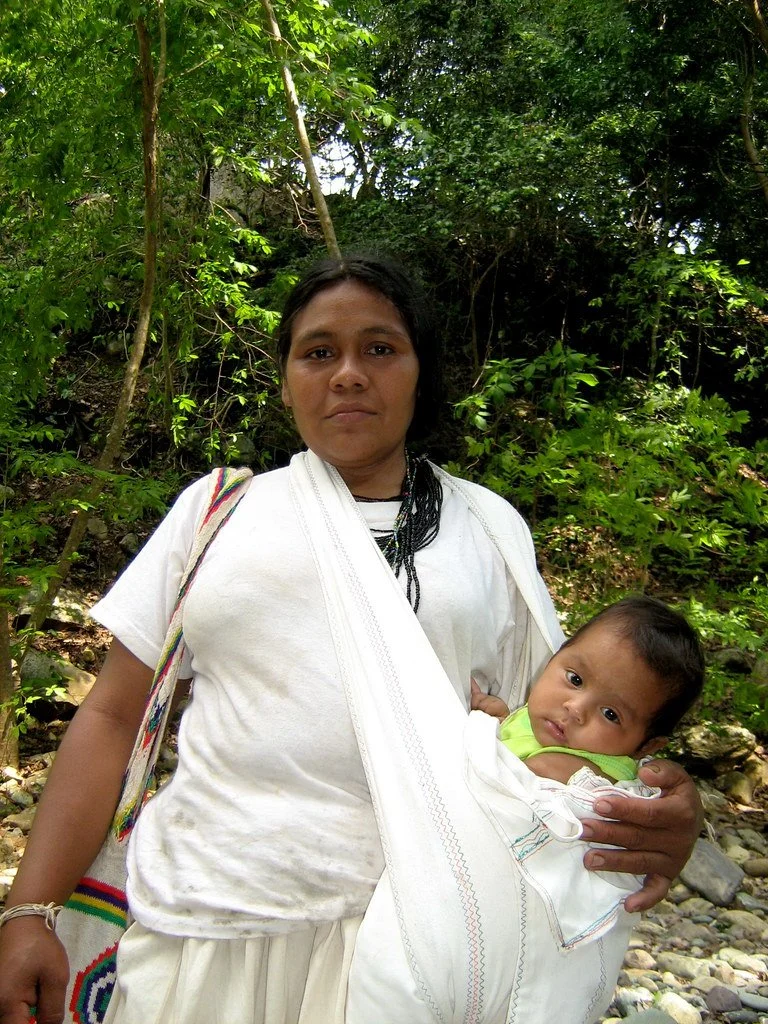Between Andes and Amazon: Carriers of the Lowlands and Coasts
Tucked between the towering peaks of the Andes and the deep green mysteries of the Amazon basin lie the valleys, foothills, and coastal plains of western South America. Here, Indigenous families have long carried their babies close in simple woven cloths, often brightly coloured and richly patterned, reflecting centuries of cultural exchange and adaptation. These carriers are practical tools for daily work in fields and markets and also an extension of the landscape itself — bridging mountains, rivers, and sea.
From Ecuador’s coastal communities to the lowland valleys of Peru and Colombia, these carrying traditions show us the vibrant diversity of South America beyond the heights and jungles we often imagine first. Each wrap, each knot, and each woven motif speaks of connection — to land, to family, and to a shared history of resilience and care.
This joyful image shows an Arhuaco woman from Colombia’s Sierra Nevada de Santa Marta, carrying her baby in a traditional mochila. These handwoven bags are deeply sacred, symbolising the community’s connection to the land, ancestors, and spiritual responsibilities. Babies rest safely inside, close to their mother’s heart, listening to the quiet rhythms of mountain life and learning the world from this gentle, protected place. The mochila is not just a carrier — it is a vessel of stories and belonging, wrapping each child in the warmth of culture and love from the very beginning.
This beautiful image shows a Kogi man carrying his baby close in the lush Sierra Nevada de Santa Marta region of northern Colombia. The Kogi, descendants of the ancient Tairona civilization, see themselves as guardians of the earth, living in deep balance with the 'Great Mother.'
The simple cloth wrap he uses is functional and symbolic — a soft extension of their connection to each other and to nature. Worn high on the back, the baby is kept safe and close while sharing in the daily rhythms of walking forest paths, tending crops, and weaving spiritual knowledge into every task.
Among the Kogi, caregiving is communal and deeply spiritual. Carrying a child this way reflects teachings that all life is interwoven, and each generation holds the responsibility to nurture and protect the world around them.
To be carried in Kogi tradition is to move through the forest as part of an unbroken line of ancestors, feeling the heartbeat of the land and learning the sacred interconnectedness of all life from your very first breaths.
This powerful image shows a Kankuamo mother carrying her baby in the Sierra Nevada de Santa Marta region of Colombia. The Kankuamo are one of four Indigenous groups from this mountain range, along with the Kogi, Arhuaco, and Wiwa, all of whom share a profound spiritual relationship with the land they call the ‘Heart of the World.’
The simple cloth wrap, tied around the shoulders and back, holds the baby snug and upright, keeping them close to the mother’s warmth and heartbeat. As she walks, the baby sways gently, sharing in every moment of daily life — gathering food, tending to tasks, or moving between communities.
For the Kankuamo, babywearing is more than a practical necessity; it is an expression of community continuity and deep respect for nature. Babies learn from the very beginning that they are never separate from the earth or their family — they are carried forward in love and tradition.
Among the Arhuaco people of the Sierra Nevada de Santa Marta in Colombia, babywearing is a practice deeply woven into spiritual and cultural life. Using a simple cloth or handwoven mochila, babies are carried close to the caregiver’s heart, wrapped in the white garments that symbolize the snowy peaks and purity central to their worldview. This closeness allows children to learn the rhythms of daily life and feel the deep connection to nature and ancestral traditions from their earliest days. To be carried this way is to be embraced by both family and mountain spirit, feeling every step as part of the earth’s heartbeat.
A note of gratitude and respect
We respectfully acknowledge and honor the individuals and communities depicted in historical images throughout this series. Many of these photographs were taken in times and contexts where informed consent as we understand it today was not sought or given, and some may have been created through coercion or exploitation.
We share these images with the deepest gratitude, not to romanticize or objectify, but to recognize and celebrate the strength, resilience, and wisdom of these cultural practices. We hold these ancestors and knowledge holders in our hearts and aim to represent their traditions with integrity, humility, and care.
We commit to continuing to learn, listen, and uplift the voices of contemporary community members and descendants, and we welcome guidance on the respectful sharing of these images.




